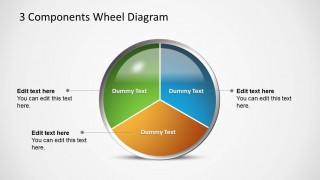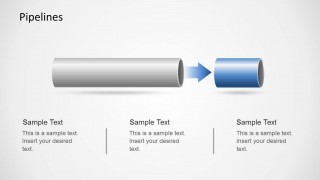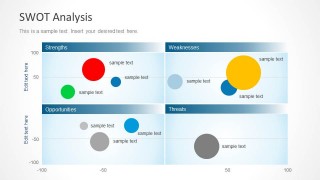Learn more how to embed presentation in WordPress
Copy and paste the code below into your blog post or website
Copy URL
Embed into WordPress (learn more)
Comments
comments powered by DisqusPresentation Slides & Transcript
Presentation Slides & Transcript
Welcome to Demographics School
presented by
Rodney Johnson
Dent Research
Survive & Prosper
Boom & Bust
Boom & Bust Elite
HS Dent
Independent Economic Research Company
Forecast economic change based on three key tools:
1. Demographics and demographic trends
2. Predictable consumer spending patterns, and
3. Technological innovation acceptance rates
Economics Have Two Levels
Macro Economics – Large trends
Micro Economics – individual choices
Macroeconomists are wrong about big things
Microeconomists are wrong about lots of little things
Economics Relies on the Rational Man Principle
Each consumer will make a rational choice when faced with a trade off in his or her personal situation.
Think of all the decisions you have made. Think of all the decisions you see others make.
We’re screwed.
Economic Change Depends
on the Herd
Figure out why people do things.
Find the main source of economic and emotional pain in people’s lives.
What is driving their decision-making, which we know to be irrational?
Kids.
The corallary –
Raising children is painful and makes us do stupid things.
What You Will Learn
Background of economics
The sources of our research
The statistics involved (good and bad)
What the Average American looks like
Three main tools of HS Dent research – demographics, predictable spending patterns, technology innovation and acceptance
What lies ahead
What You Will Be Able To Do
Describe how modern, industrialized economies work
See the next economic “season”
Estimate changes to businesses, investors, and even countries
Highlight the opportunities and risks in the next 3, 5,10 and 20 years
Economics
Malthusian Economics
Classical Economics
Keynesian Economics
Austrian School
Malthusian Economics
Scarcity
Current technology
Population (crowd-out)
Classical Economics
Input of Labor
All inputs are incremental
Always moving toward full employment by shifting inputs to where needed
Keynesian Circle
Keynes’ Animal Spirits
The colorful name that Keynes gave to one of the essential ingredients of economic prosperity: confidence. According to Keynes, animal spirits are a particular sort of confidence, "naive optimism". He meant this in the sense that, for entrepreneurs in particular, "the thought of ultimate loss which often overtakes pioneers, as experience undoubtedly tells us and them, is put aside as a healthy man puts aside the expectation of death". Where these animal spirits come from is something of a mystery. Certainly, attempts by politicians and others to talk up confidence by making optimistic noises about economic prospects have rarely done much good.
Economist.com
Components of GDP
C + I + G + R
Consumer consumption
Investment by business
Government spending
Net exports (exports minus imports)
Keynesian Components
of GDP
C + I + G + R + GRRR
Consumer consumption
Investment by business
Government spending
Net exports (exports minus imports)
LIONS AND TIGER AND BEARS! (Oh my!)
Basics of Hayek
(Austrian School)
Free markets allow best allocation of resources
Government intervention (interest rates and other monetary policy ) causes mal-investment
Those mal-investments must be worked out of system over time
It is the BOOM that should scare you!
Mises Institute
Hayekian Triangle
The Federal Reserve
Why Does the Fed Exist?
Response to bank panic of 1908
End regional currencies
Stop runs on banks
Amended Monetary Act 1913
…the Fed "shall maintain long run growth of the monetary and credit aggregates commensurate with the economy's long run potential to increase production, so as to promote effectively the goals of maximum employment, stable prices, and moderate long-term interest rates."
www.federalreserve.gov
www.federalreserve.gov/kids
Federal Funds Target Rate
2003- November 2012
Data Source: Federal Reserve, 2012
30-Year, 10-Year, and Fed Funds
1988 - October 2012
Data Source: Federal Reserve, 2012
Federal Reserve Balance Sheet
2007-2012
Data Source: Federal Reserve, 2012
In Trillions
Before Financial Crisis
First Response to Crisis
QE 1
QE 2
QE 3
Announced
Federal Reserve Balance Sheet, Detailed View, 2007-2012
In Billions
Data Source: Federal Reserve, 2012
Fed Actions
Lower short term interest rates
Inject liquidity by purchasing illiquid assets
Long-term Security Asset Purchase
(QE1, QELite, QE2)
Operation Twist
QE3
VIDEO
Chris Martenson,
Crash Course
Money Supply & The Fed
What About Gold?
Held to $20.67/oz. from 1860s through 1933
Made illegal to hold gold personally in 1933
Moved to $35/oz. under Roosevelt
Remained until 1971 when Nixon closed the Gold Window
Legal to hold gold again in 1976
Gold, Average Annual Price
1900- April 2013
Data Source: World Gold Council, 2013
Why Gold Will Not
Become Currency
Everyone would have to adopt at same time or risk ruinous rise (see Swiss)
Removal of lever for adjusting business cycle (prices versus currency value)
Loss of control on the part of government
More Presentations

By surviveprosper
Published May 3, 2013

By surviveprosper
Published May 6, 2013

By surviveprosper
Published May 6, 2013

By surviveprosper
Published May 6, 2013

By surviveprosper
Published May 6, 2013

By surviveprosper
Published May 6, 2013

By surviveprosper
Published May 20, 2013

By surviveprosper
Published May 20, 2013

By surviveprosper
Published May 20, 2013

By surviveprosper
Published May 20, 2013





